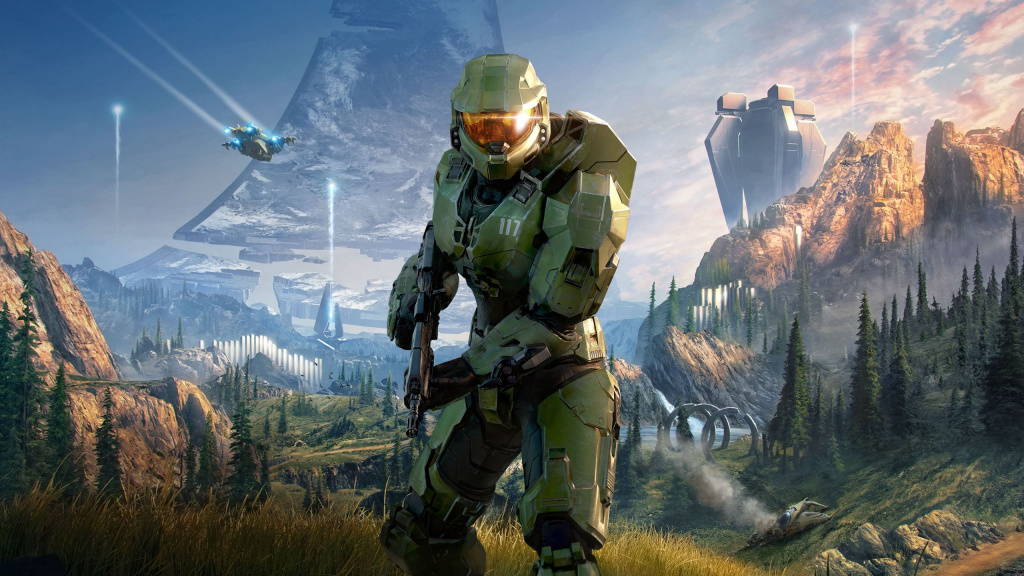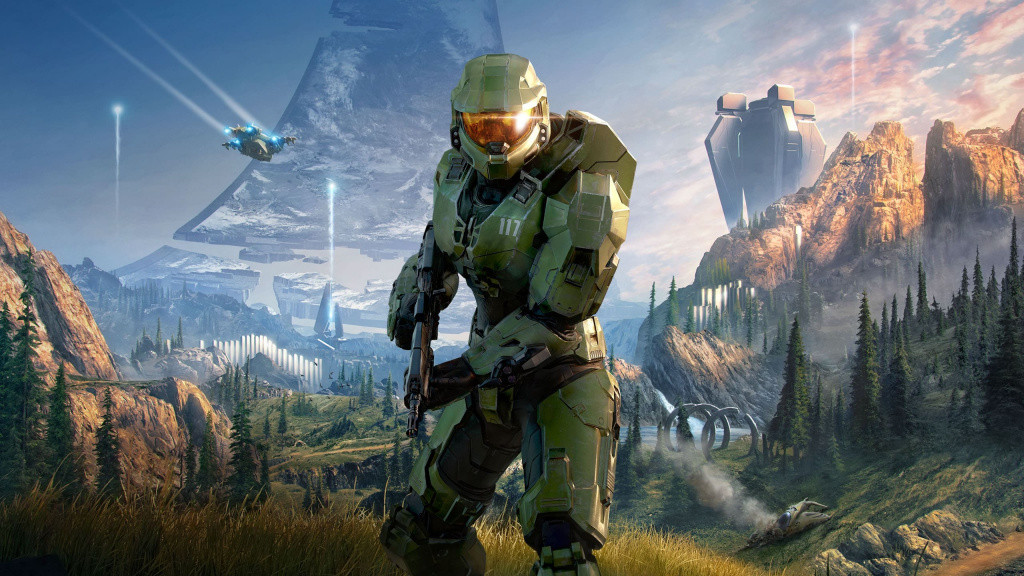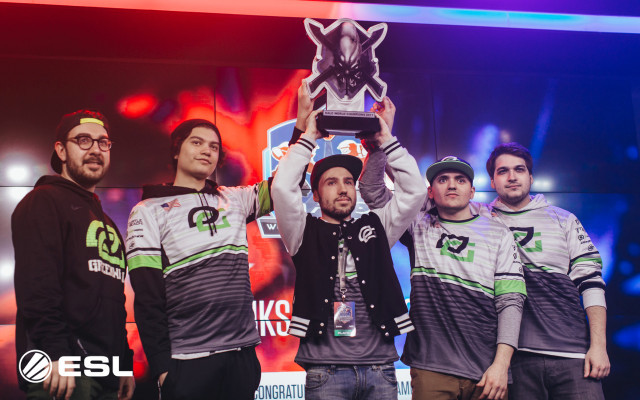
In a current first-person shooter space occupied by Call of Duty, CS:GO and Valorant, Halo’s dominance as an esport in the mid-2000s feels borderline nostalgic. Halo 2 specifically, released in 2004, has been well documented for its innovations in online multiplayer and matchmaking infrastructure, but it’s also an important stepping-stone within esports history.
The success of Halo 2 led to televised broadcasts in the US for 2006’s Boost Mobile MLG Pro Circuit, which aired the Halo 2 Pro Series and ballooned the industry’s exposure in North America. Major League Gaming (MLG), an esports organisation founded in 2002, were instrumental to its competitive popularity – staging huge tournaments and earning historic sponsorship deals, like Halo player Tom “Tsquared” Taylor being featured on Dr Pepper bottles in 2008.
Fast forward to 2020 and the outlook for Halo is far more uncertain. With latest entry Halo 5: Guardians, the franchise firmly fell from the zeitgeist – proving divisive to professional players for pushing beyond the formula, and failing to maintain substantial long-term interest.
There’s hope for developer 343 Industries – who have led the franchise since 2012’s Halo 4 after creators Bungie split from Microsoft – to recapture the magic with Halo Infinite. Yet, after the game’s delay into 2021 following mixed feedback to a trailer, an element of trepidation has crept into Halo’s big comeback.
But can Halo Infinite put the franchise back on its pedestal? For some within the community, it’s an achievable goal locked into the right track – although it might take an awareness of past mistakes from the developers and the community itself to make it happen.
Will Halo Infinite live up to its promise? (Picture: Microsoft)
Halo 5’s rocky road
There’s many reasons for Halo 5’s failure to go the distance as a competitive title. Along with controversial changes to gameplay like additional Spartan abilities, there’s the obvious limitation of it being exclusive to Xbox One – a console which was less widespread than its PS4 rival.
Despite this, there were players who latched onto the franchise through this different brand of Halo. Alexander “Shyway” Hope, 28, a caster for the Halo Championship Series, joined the scene in March 2018 after getting noticed via Halo content on his YouTube channel. He’s now host of podcast HCS Weekly, which was previously helmed by Tsquared himself.
“Halo 5 is the product of a fundamental change in direction for the franchise that the community vehemently disagreed with,” Shyway tells GINX Esports TV. “People disagreed with some of the changes that were made in Halo Reach and Halo 4, like adding sprint and abilities, and the community got to this point where any form of ability in a Halo game is immediately met with anger and distaste by the core classic audience from the golden era.”
While Shyway agrees some of these criticisms against Halo Reach and Halo 4 were valid in regards to taking away competitive viability, he believes the latest title’s advanced mobility elements offer a unique experience which makes it distinctive from prior instalments.
“It’s incredible, it’s just different,” Shyway added. “So that’s the issue too. There’s a very large, core community from back in the golden era that doesn’t understand this new Halo and doesn’t want to understand it because they want Halo to be a very specific way.”
While professional players upon release were lukewarm or dismissive of the title, Halo 5’s competitive scene hugely benefitted from the vast amounts of money thrown at tournaments. The Halo World Championship prize pool in 2016 hit $2.5 million and became the largest in esports shooter history at the time, through a combination of Microsoft’s initial $1 million donation and crowd-funding from in-game purchases.
In fact, the initial marketing push from Microsoft largely helped gloss over the cracks. The Halo World Championship Finals in 2017 broke viewership records for the esport – achieving 135,000 concurrent viewers across multiple platforms with 13 million unique viewers over the entire weekend. The heavy caveat with these numbers however is 10.3 million viewers came from Twitter, with the event strongly pushed to users when they booted up the site.
These huge prize pools coupled with a lack of meaningful updates for pros from 343 Industries, led to Halo 5 becoming a hollow cash cow for many competitive players. For Tommy “Saiyan” Wilson, 21, who became a Halo pro player in 2017 when he joined Luminosity Gaming, Halo 5 became a “wasteland for pro players”.
OpTic Gaming win the Halo World Championships in 2017 (Picture: ESL)
“I think money has become a crutch for some games, Halo 5 in particular,” Saiyan said. “A lot of people really didn’t want to play the game but there was just so much money on the line, it had that extra push.
“People can justify playing a game because there’s so much money to make a living off of it, rather than just that natural passion or engagement. It’s like,’things aren’t that great right now, we’re not getting anything in [Halo 5] that we want, and no one’s listening to us, but there’s money’. That’s how I feel Halo 5 became a wasteland for pro players in a way.”
Saiyan does credit 343 for eventually opening up to the community, even if it was a little too late – with major changes arriving in 2018 three years after release. From his own experiences, it’s the lack of collaboration from many vocal pro players which became a large source of frustration.
“I think a lot of pro players have a mindset that things need to be a certain way and they need to be changed quickly, and if it isn’t that way, a lot of people just shut down,” Saiyan said. “When I became a professional player, I started getting introduced into these group chats with the devs and talking about the Halo Championship Series (HCS). They were asking us questions and trying to get feedback, and a lot of people just weren’t engaging.
“People would still complain and put that out there, like ‘this really sucks, this is terrible’, but they wouldn’t put in any extra effort to show they want things to change.”
Halo: The Master Chief Collection has garnered its own small competitive scene from those yearning for the franchises’ yesteryears, which has perhaps further amplified divides in the Halo community.
Halo 5 introduced some controversial new Spartan abilities (Picture: Microsoft)
Despite releasing prior to Halo 5 in 2014 with a troubled launch, there’s been far more buzz around the compilation in recent years. Its release on PC in 2019 with Halo Reach even spurred fans to flood 343 Industries’ offices with pizza in appreciation, to the point where community manager Brian Jarrard had to tell fans to stop.
The Halo Championship Series now flutters between Halo 5 tournaments and events for the Master Chief Collection. A community split between games isn’t anything new, as seen with the continued player support around Super Smash Bros. Melee, but within a scene with already low viewership numbers (a recent MCC Pro Series Halo 3 event hit just over 30,000 on Twitch), it only emphasises the sense of a fractured community.
Halo Infinite’s course correction
Judging by early announcements surrounding Halo Infinite, there’s reasons to believe 343 Industries has learnt from past mistakes. To solve the accessibility issue, Halo Infinite will be available on all Xbox platforms and PC from launch. Perhaps more significantly, the multiplayer will be free-to-play, opening the doors to anyone with a fleeting interest in the franchise.
While a return to Halo’s core gameplay mechanics is perhaps the desired result from fans, it’ll likely be new additions to the formula which leave the biggest mark. 343 Industries dev Jeff Easterling rebutted rumours of a Battle Royale mode being in the works back in 2018, although with the success of Call of Duty: Warzone this year, it wouldn’t be surprising if there’s been a change of tack within the studio or from Microsoft’s business heads.
On the competitive front in preparation for Halo Infinite, the Halo Championship Series has already partnered with Esports Engine, a management organisation led by former MLG members. With MLG so integral to Halo’s early competitive years and success, it’s another sign that strides are being made to recapture and cement Halo’s place in the current, crowded FPS market.
Halo Infinite was delayed to 2021 after its gameplay debut (Picture: Microsoft)
It’s the game’s delay into 2021 which is the main cause for concern, especially with reports of troubled development. For casters like Shyway however, it’s a chance for Halo Infinite’s launch to happen when the world, hopefully, isn’t consumed by the COVID-19 pandemic.
“I think if Halo esports is really going to thrive, what I’m hoping is we get real proper events,” Shyway said. “If the game comes out in spring or next holiday, then hopefully the possibility of real live events is there and we can get some proper Halo esports tournaments. I think that’s going to be so important for the game’s viewership and how it does as an esports title.”
The anticipation is already spreading among esport organisations too. Saiyan has signed with Team Envy’s revived Halo roster for 2021, while Cloud9 and Sentinels have also committed to the cause – the latter seeing Bradley “Frosty” Bergstrom switch from the Call of Duty League back to his Halo roots. With this year seeing many top players switch to Valorant, it’s hoped there’ll be a similar pattern for Halo Infinite in 2021 – bringing aboard key personalities old and new.
Personality drive
Halo has been a launchpad for some of the biggest names in gaming today, most notably Tyler “Ninja” Blevins who competed as a pro player for Luminosity Gaming before Fortnite pushed him into streaming superstardom.
The presence of compelling personalities is arguably one of the most important aspects of any esport, lifting games which otherwise might fall short as spectator experiences. The first year of the revamped Call of Duty League was consistently faced with complaints from pros over Modern Warfare frustrations – but that didn’t stop many tuning in for Ian “Crimsix” Porter’s chaotic post-match interviews or the latest Chicago Huntsmen performance.
For Halo, there’s a significant lack of figures to latch onto. Eric “Snip3down” Wrona and Paul “Snakebite” Duarte are arguably the biggest at the moment, but there’s still little in the way of content creation on YouTube or streams showcasing these players.
Hector “H3CZ” Rodriguez, co-CEO of NRG and founder of OpTic Gaming, put the argument more bluntly in a video from 2016 – calling for the Halo community to make better strides to promote the scene.
It’s something Saiyan is especially aware of. Despite being in the middle of studying for a degree, he’s ready to dedicate the next few years to helping ensure Halo Infinite goes beyond its inevitably huge launch – committing as a professional player, content creator and streamer.
“I want to make it happen,” Saiyan said. “It’s not so much just I hope this game is big, I’m going to take time off so I can put myself out there and hopefully influence other pro players and other personalities to put themselves out there and create something.
“Among all Halo 5’s problems, there were still a good portion of passionate people that wanted to play Halo 5 no matter what. They still enjoyed it. However they didn’t make content, nobody really streamed, nobody really put themselves out there to have anybody latch onto them.
“It’s very important for myself, the player and other players, to be hands on involved if we want to see it succeed. I was a viewer early on in Halo 5 and there wasn’t that much to latch onto from a community aspect. It needs to have everything and for Halo Infinite, I’m very much in the mindset that I have some ability to have some impact.”
Ninja was a top competitor in Halo (Picture: Halo World Championship)
With players unable to make a living from current Halo tournament winnings, there’s an element of urgency for Halo Infinite’s arrival too amid the preparation.
“Everyone is waiting for Halo Infinite at this point,” Shyway states in regards to the community. “There’s no prize money in Halo right now and there’s not going to be more prize money in the Master Chief Collection that’s going to allow a pro player to actually thrive off of it. We’re all waiting on Halo Infinite and we’re all depending on it, so there’s a ton riding on that.
“Especially since the delay, it seems like a lot of people are more burnt out than usual, there’s less motivation, less reason to continue to grind as hard.
“I think Halo Infinite has a ton of potential but at the same time, the way the community is right now, we kind of need the game.”
You can check out Saiyan streaming on Twitch here, and Shyway’s YouTube channel here.




